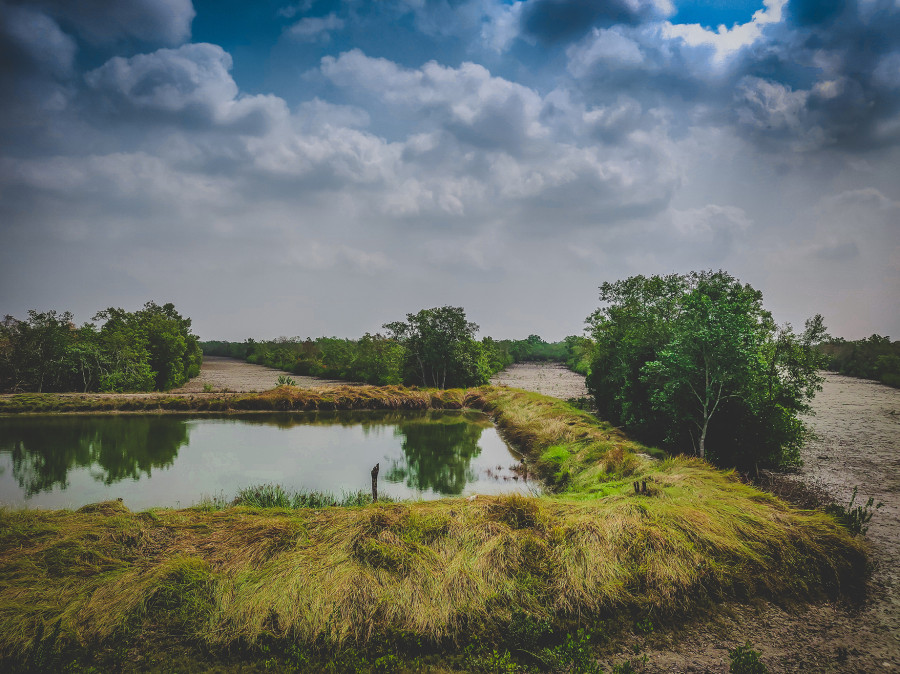Columns
Transboundary water governance
Despite massive hydropower potential, the Hindu Kush Himalayan region remains energy-poor.
Shekhar Koirala
There are two themes of development concern to Nepal and the larger Hindu Kush Himalaya. First, how do we harness the potentials of water for clean energy while minimising the loss of life and property from disasters? Second, how can we better manage our transboundary commons? Human civilisation and its well-being can be sustained only with our ability to pursue resource-driven affluence within the ecological limits of a unique and finite planet. The rate of exploitation is reaching carrying capacity. The Sustainable Development Goals and the Paris Climate Accord reflect this concern.
Nepal is home to the Himalaya whose glaciers and snowfields store the largest amount of frozen water outside of the polar regions. We have the potential to meet all our energy needs through clean hydropower. Carried along by ambitious but realistic policy decisions in energy, agriculture and tourism, Nepal hopes to become an exemplary low-carbon economy. Despite having a hydropower potential of 500 gigawatts, the Hindu Kush Himalayan region remains energy-poor. Roughly 400 million people in the region lack access to electricity and more than 80 percent of the rural population use traditional biomass for cooking.
Specific energy policy
The remoteness of the region requires a mountain-specific energy policy which includes innovative mechanisms that incentivise investments into infrastructure through commercial lending, de-risked investment and leveraging of private finance aimed at cross-border energy generation and trade; benefit sharing to support local communities build off-grid based rural electrification; and regional mountain-specific energy data and management systems to set objective targets for evidence-based energy end-use.
Climate change in the Himalaya is caused not just by greenhouse gas-driven global warming, but also by severe regional air pollution originating in the nearby Indo-Gangetic plains. While the region has a large untapped potential for the generation of clean energy, the streamflow needed for hydropower is itself at risk from climate change. The reduction of pollution and the release of hazardous chemicals, enhancement of water efficiency, and the restoration of water-related ecosystems in the mountains, rivers, forests and lakes now need to become a global imperative.
Integrated water resource management calls for national coordination and international collaboration. The basin of direct concern to us is the Ganga-Brahmaputra-Meghna river system. It injects the third largest volume of freshwater into the world’s oceans. Yet, this river basin has been identified as being among the top four in terms of risks exhibited by high environmental and human stress, nutrient pollution, changes in population density, potentially leading to conflict and competition.
Despite projected increases in water availability, withdrawals will amplify as a result of urbanisation. We no longer have a choice but to cooperate. The shared benefits from hydropower, flood control, irrigation, navigation, drinking water and a host of ancillary economic activities are just too valuable to ignore. Almost every year, excessive rainfall within compressed calendar results in severe flash floods across the plains of Asia. Recurring disasters have magnified Nepal’s vulnerability, and they underscore the need for better plans for more resilient recoveries.
An optimal flood management approach that strengthens peoples’ coping capacities should be put in place. A resilience framework that strengthens early warning systems, invests in preparedness and response and diversifies people’s livelihoods and risk transfer schemes is needed. Many disasters are induced by climate change. Resources exploited by one country can have irreversible consequences for other countries. Regional collaboration against disasters should create venues for experience sharing and resolution of conflicts and misunderstanding.
With limited cross-border sharing of knowledge, cooperation among countries is weak. The first priority is vibrant transboundary cooperation. The preoccupation of intergovernmental initiatives is often based more on political and economic interest rather than on social and environmental wellbeing on a regional scale. Progress requires the establishment of formal, mutually agreeable frameworks that transcend national myopia. Making the existing inter-governmental forums such as the South Asian Association for Regional Cooperation, Bay of Bengal Initiative for Multi-Sectoral Technical and Economic Cooperation, Association of Southeast Asian Nations and Shanghai Cooperation Organisation more effective would be a start. New issue-based platforms like the Arctic Council may need to be created.
Strong partnership
The second priority is effective coordination and partnerships. The governance of resources is often shared by multiple layers of government. The mechanisms are inadequate because much of the authority lies at the national level, with regional and local authorities often being resource-starved. This imbalance is incompatible with natural resource management. In recent years, the region has emphasised governance through decentralisation of management of resources. To be effective, however, local initiatives still need to be supported by governance systems that link upstream and downstream communities. This requires a strong partnership between the state and private actors as well as formal and informal water-management institutions along river basins.
The third priority is data, evidence and knowledge. The science-policy-practice interface must be deepened. To improve evidence-based adaptation, improved climate models and downscaling strategies capable of capturing changes in extreme events are essential. This would require long-term observational data collection and analysis which is best done by researchers at universities and think tanks who collaborate across borders. Their work should include a better understanding of hazard and risk, monitoring, and early warning and response systems. These need to be accompanied by policy experimentation and climate literacy. Here, the role of institutions like the International Centre for Integrated Mountain Development based in Kathmandu must be strengthened.
***
What do you think?
Dear reader, we’d like to hear from you. We regularly publish letters to the editor on contemporary issues or direct responses to something the Post has recently published. Please send your letters to [email protected] with "Letter to the Editor" in the subject line. Please include your name, location, and a contact address so one of our editors can reach out to you.




 15.84°C Kathmandu
15.84°C Kathmandu















